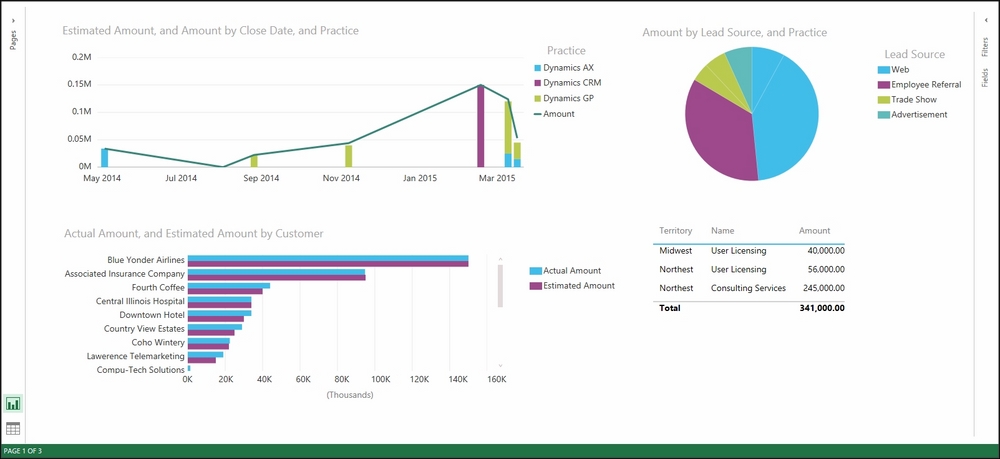Viewing each chart, cards, and map on a separate report page may make it easier to design, update, and/or troubleshoot your charts, maps, and/or tables, but at some point, we may want to have a single page with everything on it. This is as simple as copy and paste.
In Chapter 6, Adding ERP Data, when we upload these reports to the Power BI for the Office 365 site, every report page will be loaded. So, either way, all the charts, maps, cards, and tables will be available for a user to view:

All reports together in the Sales Productivity Report
If you do want to add all the seven charts and maps to one or two report pages, it is as simple as copy and paste; here is a simple example of how to do it:
To add another report page for all...



